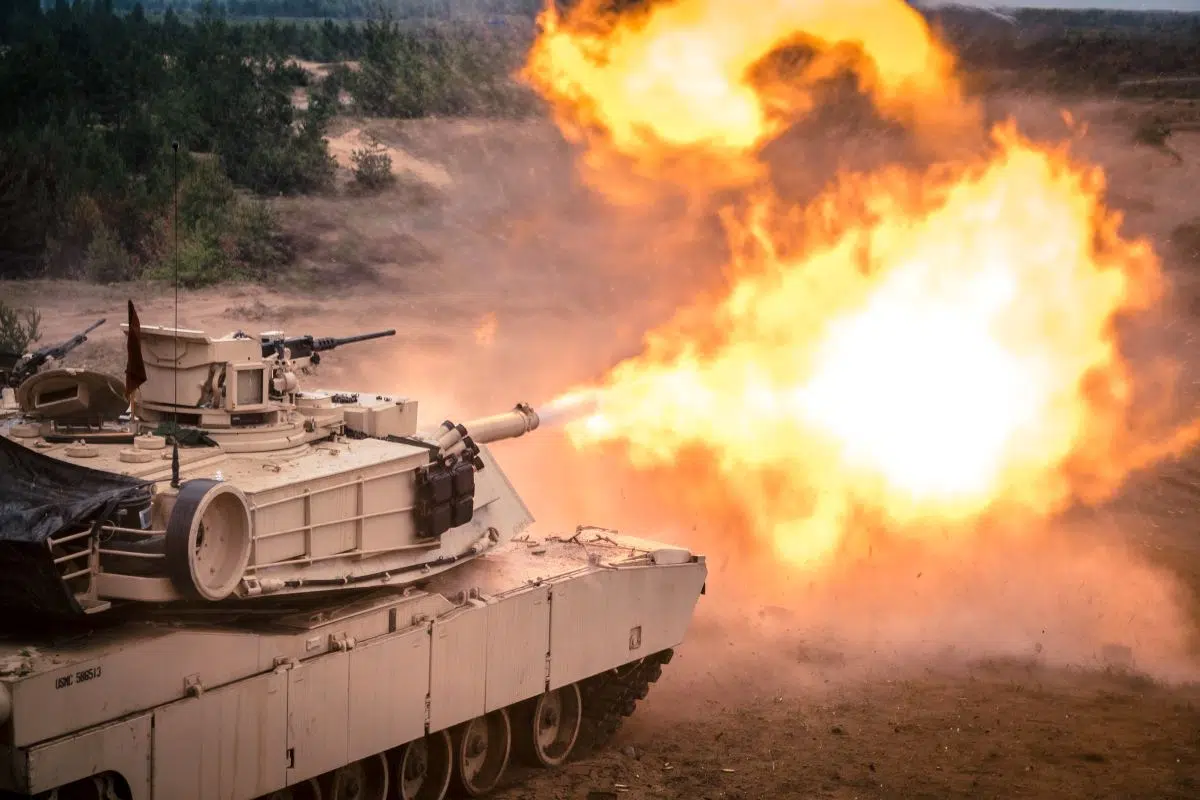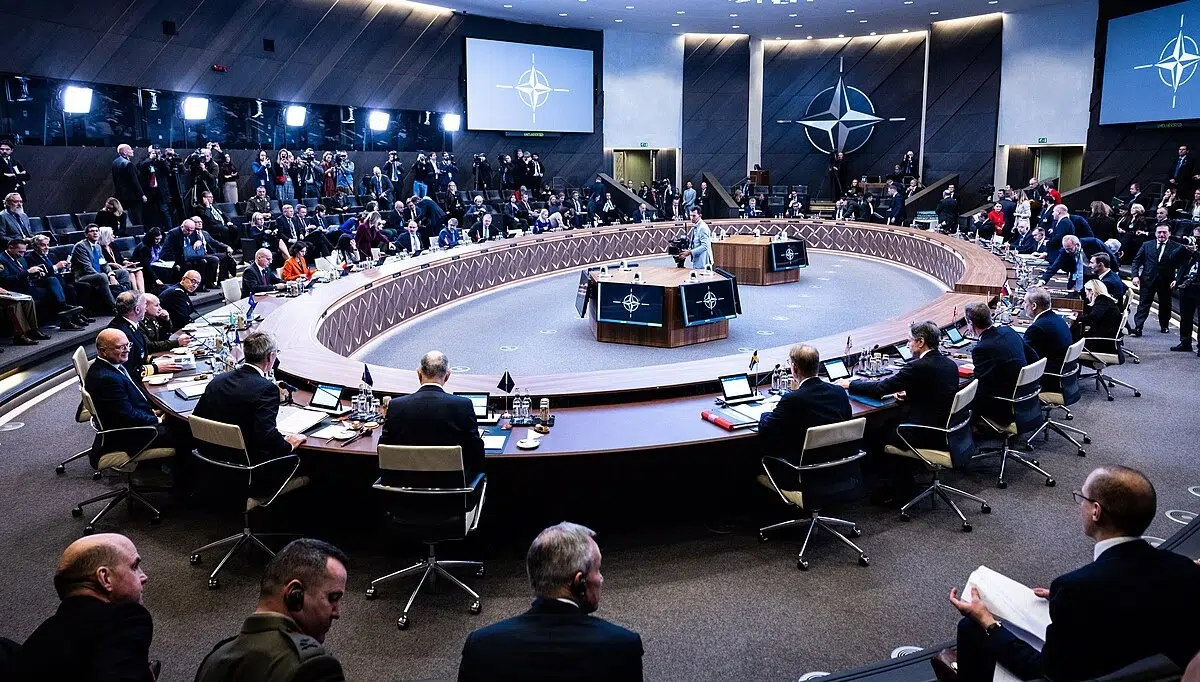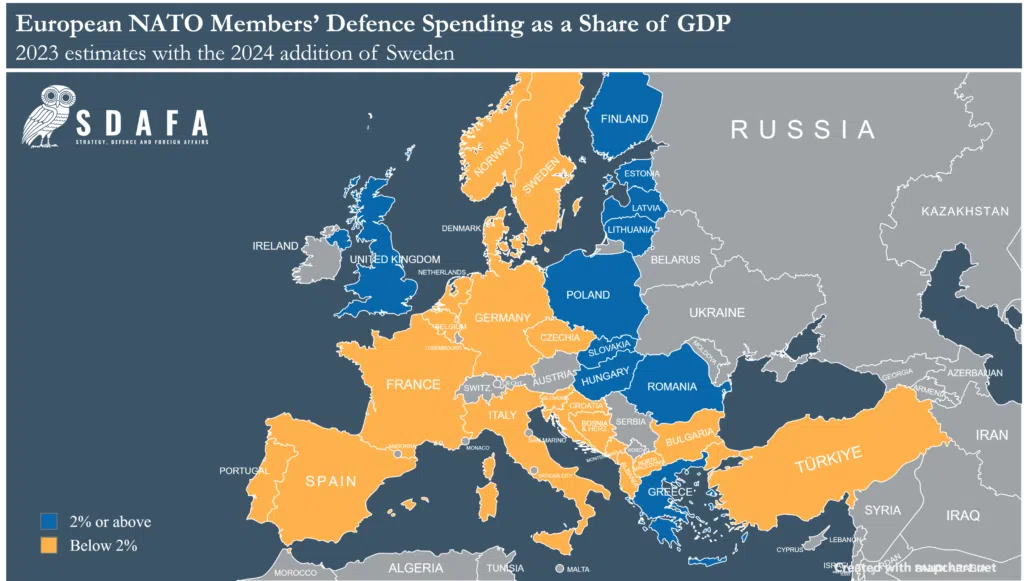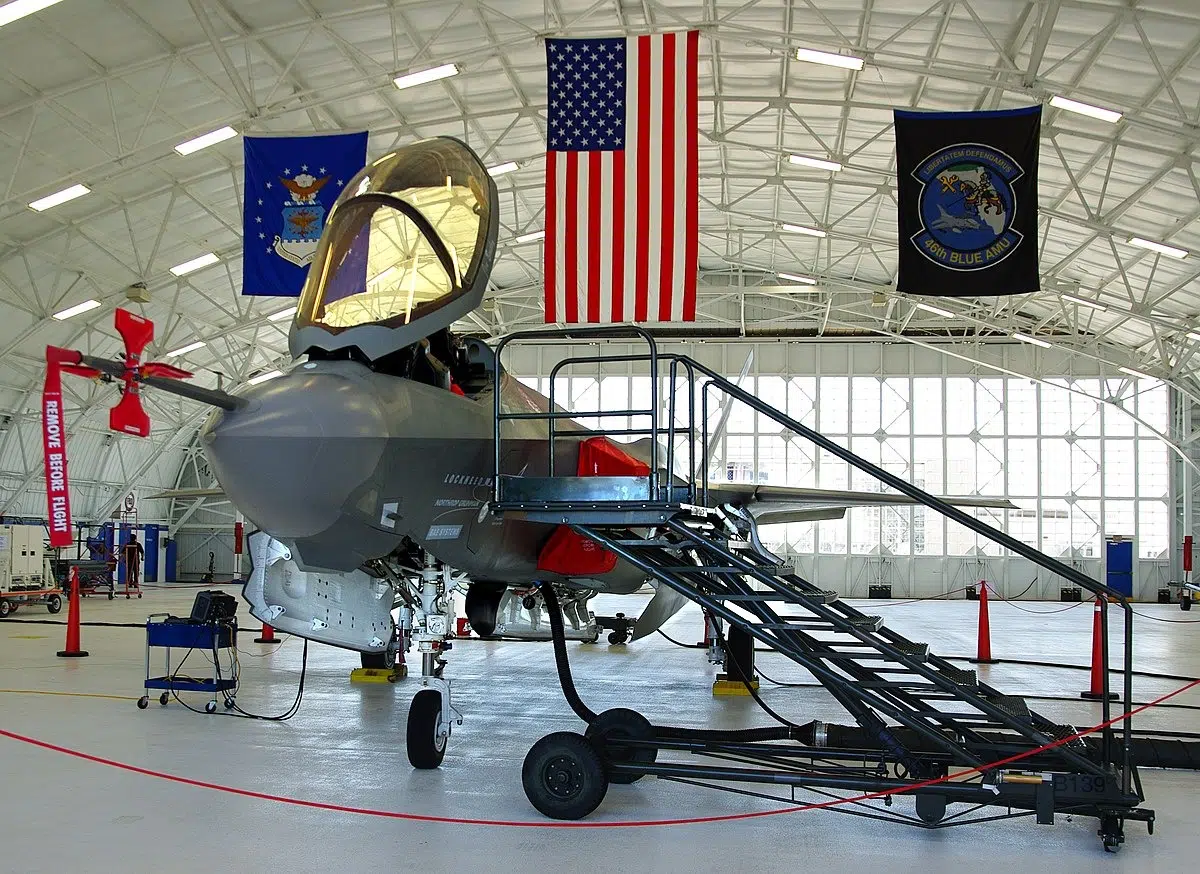
The war in Ukraine has brought the military balance in Europe between Russia and NATO back to the forefront of geostrategic thinking.
After the end of the Cold War and the demise of the USSR, Eastern Europe’s geostrategic importance as a potential flashpoint for conflict declined considerably. However, Russia’s annexation of Crimea in 2014 and subsequent invasion of Ukraine in 2022 has again catapulted the security situation on NATO’s eastern flank to the top of the alliance’s list of priorities.
Although open warfare between NATO and Russia has thus far been avoided, the potential for such a conflict to ignite is no longer unthinkable. Consequently, determining the conventional military strengths of both sides has again become a crucial preoccupation for military analysts, as it once did during the Cold War.
Is a military clash between NATO and Russia over Europe imminent?
Geopolitical and military forecasting is a difficult business. Even the experts frequently get it wrong. The CIA, for example, wrongly predicted that Russian forces would quickly steamroll through Ukraine. It has been over two years since the initial invasion in February 2022, and Russia’s “special military operation” has thus far failed to produce the victory President Vladimir Putin expected.
Although there is a heightened risk for a military clash to occur between Russia and NATO, it is clear that neither side wants to duke it out over Europe in a conventional—or nuclear— battle.
The financial and military contributions made to Ukraine by NATO members have been issued cautiously to avoid escalating tensions with Russia to the point of open warfare. Ultimately, NATO allies have been willing to expend their finances and munitions stockpiles in support of Ukraine but not the lives of their soldiers.
For Russia’s part, it is hard to imagine that the Kremlin envisages success in fighting in a wider European theater after suffering such serious setbacks in Ukraine alone. Putin’s veiled threats to use nuclear weapons may seem escalatory, but they are intended to deter further NATO intervention rather than to invite a broader conflict.

World War III?
“If the iron dice must roll, may God help us,” remarked the German Chancellor Theobald von Bethmann-Hollweg on the eve of the First World War. Neither Russia nor NATO wants to roll the iron dice. Even if the Kremlin aspires to absorb swathes of Eastern Europe into the Russian sphere of influence, this aim would be more realistically served by a strategy of hybrid warfare, which would seek to degrade NATO’s ability to resist below the threshold of open war.
With that being said, both sides have alluded to the possibility of a Third World War. Putin commented recently that the world is only “one step away from a full-scale third world war,” and Western officials have repeatedly warned that Russia will push further West into Europe if Ukraine is defeated.
This scenario would most likely transpire due to miscalculation more than anything else. For separate reasons, NATO and Russia have endeavored to keep this proxy war contained to Ukraine. However, a broadening of the conflict to the wider European continent might unfold as a series of unintended consequences.
The areas of most concern are the Baltics, the Black Sea, and Kaliningrad. The Baltic countries of Estonia, Latvia, and Lithuania are the NATO members most vulnerable to any kind of Russian incursion. The Black Sea is the sole site of maritime conflict between Ukraine and Russia, but it is also bordered by several neighboring countries and is a hub for seaborne trade. Kaliningrad is essentially a Russian military exclave sandwiched between Poland and Lithuania.
A myriad of events, particularly at these crucial points, could spark a wider conflict. A stray missile landing in the Baltics, the sinking of a civilian ship in the Black Sea, or an embargo against Kaliningrad might all be enough to upend the fragile status quo.
With those not-so-cheerful thoughts in mind, let us turn our attention toward the military balance between Russia and NATO and the factors that might decide the outcome of a war in Europe.

Military spending
“Money is the artery of war,” the Russian Tsar Peter the Great once remarked. He was not wrong. War is an expensive endeavor, and the side that is able to spend the most money on its military can afford to buy and produce better weapons and equipment, the advantages of which are obvious.
Unsurprisingly, Russia has been increasing its defense expenditure to meet the demands of the war in Ukraine. Late last year, Putin approved large increases to defense spending with approximately thirty percent of fiscal expenditure now directed toward the military.
Russia has the third-biggest defense budget in the world. Last year, it amounted to roughly $108.5 billion. However, the combined defense budgets of NATO members are larger. The alliance benefits tremendously from US leadership with the United States spending $905.5 billion on defense last year, making it the world’s largest military spender.
Non-US NATO members spend considerably less. However, this is still a considerable amount. This year, European NATO allies are projected to spend a combined sum of $380 billion on defense.
NATO members are encouraged to spend two percent or more of their gross domestic product (GDP) on defense. Few have reached this target, a fact that greatly rankled former US President Donald Trump. However, eighteen NATO members are expected to hit the target this year. European NATO allies closest to Russia tend to spend the most on defense.

Land, air, and sea
The traditional domains of warfare are land, air, and sea. This is where battles are physically fought between soldiers, tanks, aircraft, maritime vessels, and so on. By comparing the capabilities of Russia and NATO in these domains, we can formulate a clearer picture of military balance in Europe.
Quantitatively, NATO holds the advantage in the air and at sea. NATO and Russian land capabilities are closer in number at least in terms of the number of vehicles and artillery. As for the overall size of the militaries, the regular strength of the Russian armed forces is estimated to be about 1,320,000, whereas the total number of combined NATO forces is roughly 3,500,000.
Russia is purported to have 12,566 main battle tanks (MBTs) to NATO’s 12,408. Russia’s MBT is the T-90, whereas NATO militaries field a variety of models, the most notable being the American M1 Abrams, the British Challenger 2, and the German Leopard 2.
Russian military doctrine has long stressed the importance of artillery. The Russian military has about 6,575 self-propelled artillery pieces and 3,887 self-propelled rocket launchers. NATO has fewer with 4,532 artillery pieces and 3,272 rocket launchers.
Combined, NATO allies have more aircraft at their disposal with a total number of aircraft at 20,633 of which about 3,398 are fighter/interceptor planes. Russia can reportedly field 4,182 aircraft of which 773 are fighters/interceptors. The most advanced Russian jet is the SU-57, whereas, for NATO, it is the F-35 Lighting II.
At sea, NATO again has a quantitative advantage. The total number of Russian military maritime vessels is around 598, whereas NATO allies have a combined number of 2,151. Crucially, Russia only has one aircraft carrier, whereas the US has 11, the UK and Italy have two, and France has one, bringing the NATO total up to 16.

Nuclear weapons
The prospect of a nuclear war between Russia and NATO is an unsettling notion. Many military and defense experts concluded during the Cold War that a nuclear war was unlikely due to the mutually assured destruction (MAD) doctrine resulting in the annihilation of both sides in a nuclear exchange.
Nevertheless, Putin has used Russia’s nuclear arsenal as a posturing device to deter the West from deepening its involvement in Ukraine.
Russia’s nuclear arsenal is the largest in the world. Russia has 5,977 nuclear warheads. Three NATO members have nuclear weapons: the US, the UK, and France. The US has the most at 5,428, followed by France with 290, and the UK with 225.
There are two categories of nuclear weapons—strategic and tactical. Strategic nuclear weapons are capable of hitting targets at longer ranges and would likely be aimed at densely populated urban areas such as capital cities. Tactical nuclear weapons have shorter ranges and are generally expected to be used against military targets to shape the outcome of battles.
A strategic nuclear exchange would not likely occur in anything other than a case of extreme desperation, given the potential for MAD. The use of tactical nuclear weapons, however, is more feasible in the case of a massive conventional land war between NATO and Russia on European soil.
As noted by William Alberque of the International Institute of Strategic Studies, Russia views tactical nuclear weapons as providing a “comparative and asymmetric advantage over its immediate neighbors and the US and its allies.”

Numbers don’t tell the whole story…
Tallying up the numbers of various military capabilities provides a clearer picture of the means available to either side in a potential conflict. However, quantity alone does not decide the outcome of war. If that were the case, armies would be led by mathematicians rather than generals.
The war in Ukraine is a pertinent example of this. Russia enjoys a considerable quantitative advantage over Ukraine, but its military has thus far failed to achieve decisive results on the battlefield. Wars are as much about leadership, geography, weather conditions, innovation, troop quality, and training, as well as tactical, operational, and strategic brilliance, as they are about how much “kit” either side can bring to the fight.
With that in mind, here are just a few more considerations concerning a possible conflict between Russia and NATO in Europe:
- The US is the most indispensable NATO ally. Other NATO members are often dependent on the US for core capabilities such as C4ISR (Command, Control, Communications, Computers, Intelligence, Surveillance, Reconnaissance). The US military has a sizeable presence in Europe, but if American reinforcements were prevented from reaching the continent at a crucial point in time, this could give Russia a window of opportunity.
- As General Robert H. Barrow once commented, “Amateurs talk about tactics, but professionals study logistics.” A military force can have all the shiny technology in the world, but if it is incapable of conducting the movement, supply, and maintenance of its forces, it will fail in battle. Russian logistics were disastrous in the opening stages of the Russo-Ukrainian War. NATO has fared better in recent operations, but it remains to be seen how the alliance would meet the logistical demands of a full-scale conventional war.
- Willpower and morale matter. The Kremlin believes Russians have a greater propensity to tolerate the deprivations of war than Westerners and thus a stronger willpower to do what is necessary to win. This raises important questions, such as: would NATO allies act according to Article 5 and defend Baltic members if Russia attacked, and would European NATO members be willing to endure a war with Russia or seek an early diplomatic resolution?
See all the latest news from Greece and the world at Greekreporter.com. Contact our newsroom to report an update or send your story, photos and videos. Follow GR on Google News and subscribe here to our daily email!



